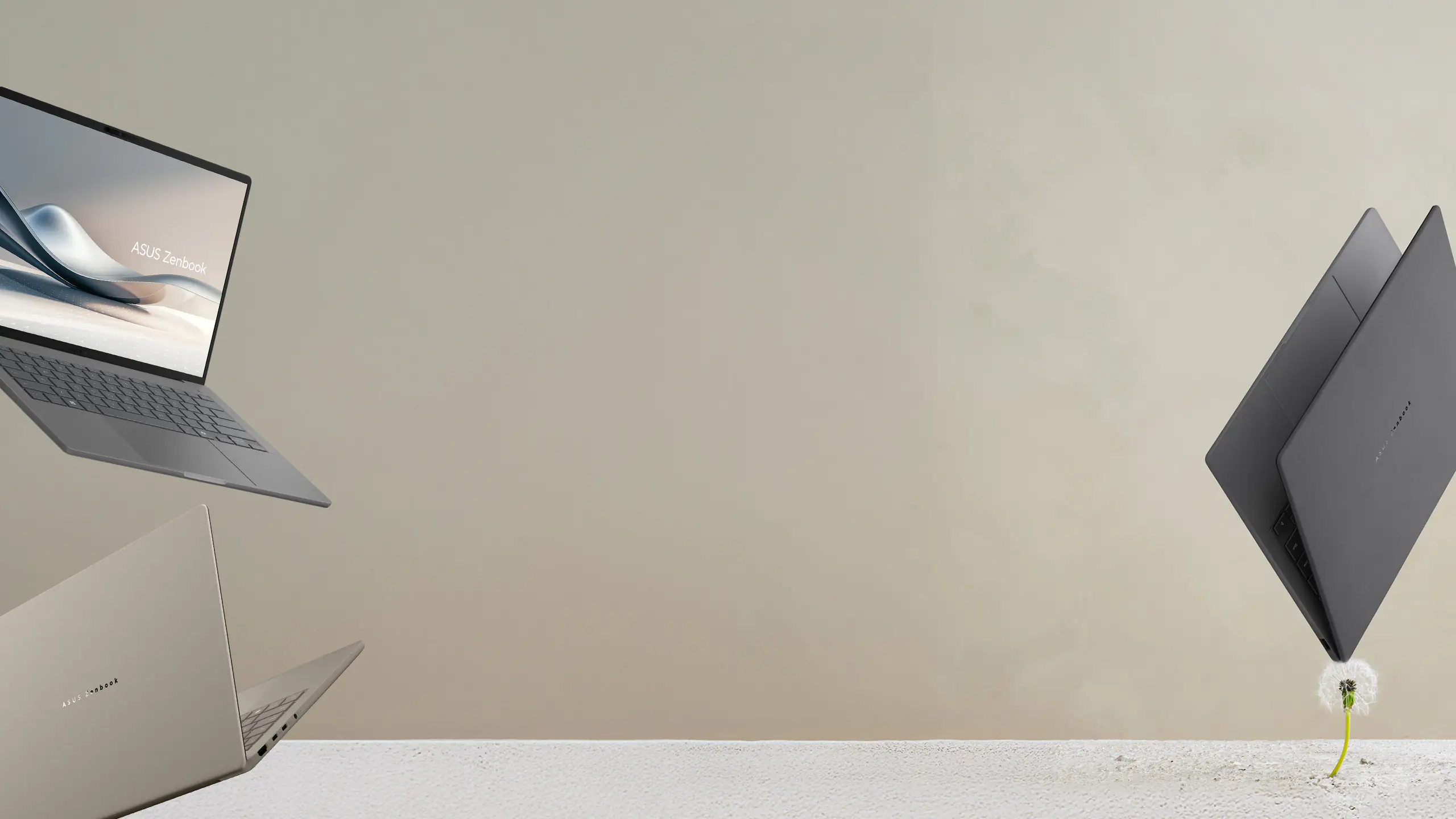© ROOT-NATION.com - Use of content is permitted with a backlink.
What Can the German “Tytan” Drone Interceptor Do, and Is It Really Capable of Taking Down a Helicopter?
The Tytan drone interceptor, a German-engineered system, has recently undergone testing in Ukraine. Its potential has raised questions about its capabilities, including the claim that it can even neutralize a helicopter. Drone defense has become an essential part of Ukraine’s air defense efforts. Enemy drones are frequently deployed to target civilian infrastructure, residential buildings, energy facilities, and transportation hubs. These attacks result in casualties, significant damage, and disruption. Beyond the physical destruction, drones are also used as tools of psychological pressure, creating an ongoing sense of insecurity among the population.
Drone strikes on infrastructure inflict significant economic damage. For instance, disruptions to energy systems can cripple industrial operations and adversely affect daily life for civilians. Drones are also employed by adversaries as a cost-effective yet efficient tool of warfare. Combat drones fulfill various roles, including reconnaissance, adjusting artillery fire, and striking military targets. Their versatility and relatively low cost make them a strategic asset in modern conflicts, capable of both direct and indirect impacts on the battlefield and beyond.

Effective countermeasures against drones can help offset an adversary’s technological advantage. As a result, Ukraine continues to explore air defense systems and weapons capable of countering large-scale attacks by Russian drones. Recently, the Tytan drone interceptor, developed by the German company Tytan Technologies, has come under consideration for this role. This advanced unmanned aerial interceptor could serve as a strategic solution for combating Russian kamikaze drones, including Iranian-made Shahed drones. Tested in collaboration with the Ukrainian defense platform Brave1, the Tytan represents a promising step forward in addressing aerial threats. Initial trials reportedly demonstrated impressive results.
More details about this technology and its potential role in Ukraine’s air defense are discussed in our full article.
Read also: Weapons of Ukrainian Victory: MAGURA V5 Maritime Drones
Concept of UAV interception
The concept of using drones to counter other unmanned aerial vehicles (UAVs) stands out as an effective method for addressing the growing threat posed by drones. This approach involves deploying a drone to detect, track, and neutralize an adversary’s UAV system. Such systems are primarily employed against kamikaze and reconnaissance drones, offering rapid response capabilities and efficient engagement with designated targets.
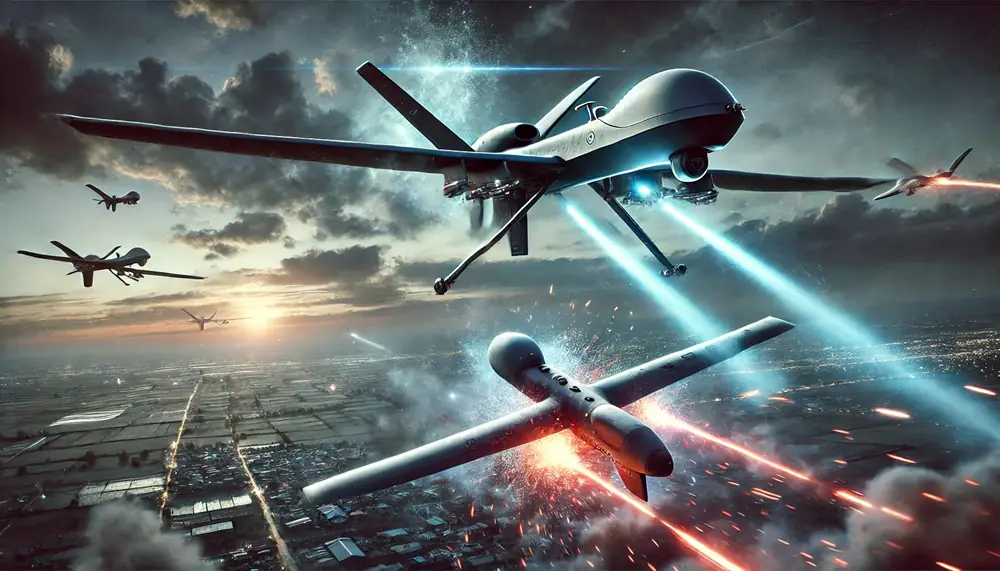
The use of UAVs to counter enemy drones offers not only high precision but also economic efficiency. This makes air defense systems more accessible and scalable. In both military and civilian sectors, such technologies are seen as a crucial step toward enhancing airspace security. It is no surprise, then, that many tech companies have already begun developing and deploying solutions in this area, recognizing their importance in addressing modern aerial threats.
Read also: Weapons of Ukrainian Victory: V-BAT Vertical Takeoff UAV
Field tests by Brave1 engineers
In recent years, Ukraine has consistently received various German-made unmanned systems. Recently, Tytan Technologies expressed interest in joining the list of suppliers. This is where things get particularly intriguing. To facilitate testing, the company provided an undisclosed number of its newly developed drone interceptors to the Ukrainian side. These interceptors, branded under the name Tytan, represent a fresh addition to the range of UAVs being deployed in Ukraine’s defense efforts.
The Ukrainian military-industrial platform Brave1 received the new UAVs for testing. Its specialists began thoroughly examining the imported technology and proceeded to the test range. Additionally, representatives from the Ministry of Defense were involved in the trials. The tests took place in December, and towards the end of the month, the platform disclosed some of the results.

Brave1 specialists reported that during the trials, they tested the deployment and launch of the new Tytan drone interceptor. The UAV’s flight characteristics and some of its capabilities in intercepting aerial targets were also demonstrated. However, the full details of the tests and their results remain undisclosed, which is understandable given the sensitive nature of the trials.
Following the trials, the Tytan interceptor received very high marks from specialists. It’s not surprising that the military-industrial platform Brave1 is hopeful for continued collaboration with the German company and the receipt of further products. While it remains unclear who will fund the project, the prospects appear quite promising.
Read also: Weapons of Ukrainian Victory: LAV 6.0 ACSV Armored Personnel Carrier
Tytan UAV development history
Tytan Technologies, based in Munich, is a relatively new company and has yet to achieve significant milestones. Currently, its product catalog features only one unmanned system, which includes the Tytan interceptor and its accompanying components. The company has focused its efforts primarily on developing this project and, for now, does not appear to be planning the launch of new developments.
The Tytan drone interceptor has reached the stage of various range trials. Tests of the UAV itself and its associated devices were conducted at German test sites. Additionally, events involving military personnel and equipment from the German army were held. For example, the launch system and other components of the system were mounted on a serial armored vehicle to address issues related to real-world deployment.
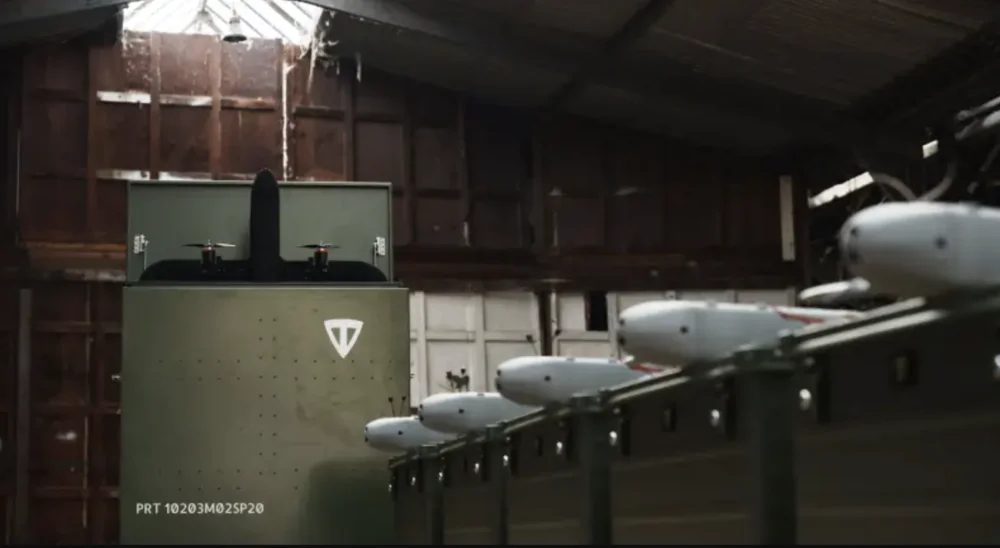
Recently, similar tests took place in Ukraine as well. Experts claim that the equipment once again demonstrated its effectiveness and readiness for tasks in real combat conditions. However, the developing company and its partners have yet to disclose full details about the trials, and the published data appears to be more promotional in nature.
It should be noted that the Tytan UAV is still in the testing phase. There are no contracts for the supply of serial equipment of this type at the moment, and it remains unclear whether such contracts will materialize in the near future. Recent news from Ukraine provides the developing company with reason for optimism, but it should remain cautious in its assessments and plans.
Read also: Weapons of Ukrainian Victory: Precision-Guided AGM-154 JSOW Glide Bomb
UAV Tytan features
The Tytan is an aircraft-type unmanned aerial vehicle designed for intercepting aerial targets. It is intended to be mounted on various ground platforms, both stationary and mobile, and used to enhance existing air defense systems. The concept suggests that this interceptor UAV will handle certain targets and improve the overall effectiveness of air defense.

The interceptor is designed for rapid deployment, being ready for action within seconds, which makes it highly effective against kamikaze drones. Tytan Technologies plans to integrate an automatic targeting system in future models, which will further enhance accuracy and overall efficiency. This technological development represents a crucial step in strengthening Ukraine’s air defense capabilities amid the ongoing conflict.
The Tytan UAV stands out as a cost-effective system, primarily due to the extensive use of 3D printing technology in its production. Specifically, the body is entirely made using additive manufacturing. It is worth noting that this term refers to a set of technologies that involve creating a product from a three-dimensional digital model through layer-by-layer addition. This approach also allows for offshoring production and facilitates easier assembly on-site. Additionally, its modular design enables the platform to be adapted to meet the evolving operational needs of potential customers.
The Tytan UAV is built according to a standard aerodynamic design. It features an elongated fuselage with a square cross-section, housing the main components and assemblies. The central part of the fuselage is equipped with a straight wing, while the tail section includes characteristic-shaped tailplanes.
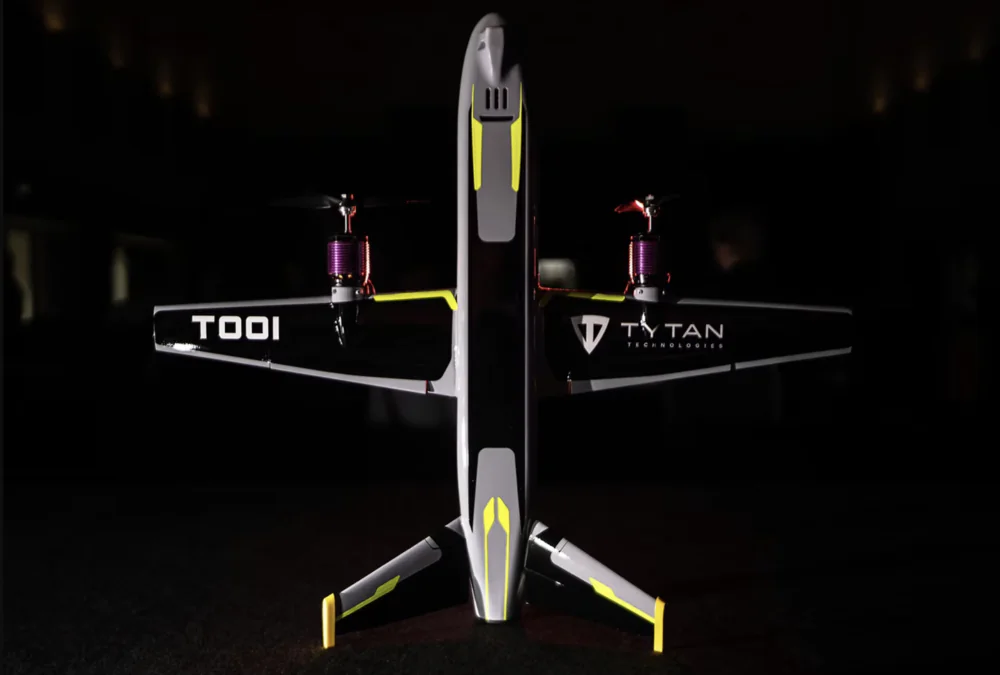
The exact dimensions of the Tytan UAV are not yet fully disclosed. Based on available photographs, the length and wingspan appear to be around 1.2 to 1.5 meters. According to the developer, the UAV’s takeoff weight is 5 kg, with a payload capacity of 1 kg.
The UAV is equipped with an electric motor from an undisclosed manufacturer. Inside the fuselage, there is a battery of sufficient capacity, and the wing houses two gondolas with electric motors. Takeoff and flight are powered by a pair of propellers that generate thrust. According to the developer, the UAV can reach speeds of over 250 km/h and has a range of more than 15 km. However, specialists from the Ukrainian military-industrial platform Brave1 have clarified these figures, claiming the speed reaches up to 300 km/h, with a flight range of 20 km.
Read also: Laser Weapons: History, Development, Potential, and Prospects
Easy to start and manage
At the current stage, the Tytan UAV is equipped with a remote control system, a front-facing video camera, and two-way radio communication capabilities. This configuration was recently tested in Ukraine. Additionally, Tytan Technologies has announced the development of a new control system that allows for autonomous operation. Thanks to what is referred to as “technical vision,” the UAV will independently search for and lock onto targets.
It is claimed that the current and developing guidance systems provide high targeting accuracy. The kinetic interception principle was chosen, which involves hitting the target directly through a collision. In other words, the Tytan will simply ram the Shahed-136, preventing it from reaching its designated target. However, I’m not entirely clear why the interceptor drone wasn’t equipped with a warhead, even a light and low-powered one. It could have been a more effective weapon.
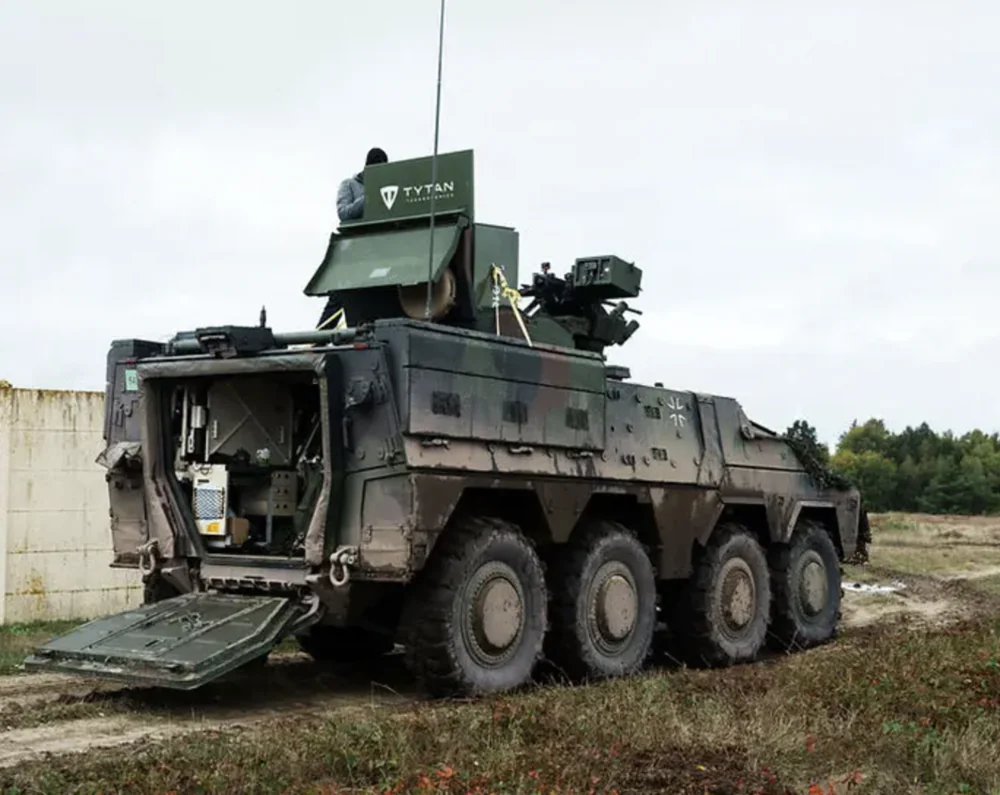
The UAV can be launched from two types of launchers. The first is a simple rail guide with a means of initial acceleration. In the second case, a rectangular transport-launch container with similar equipment is used. Regardless of the launch method, a standardized operator control panel is employed.
Here’s the most interesting part. Another notable feature of the Tytan UAV is the ability to control it using a Steam Deck gaming controller. The Steam Deck, which Valve manufactures as a portable gaming console, turns out to be an ideal device for controlling such platforms due to its powerful hardware. Ukrainian developers are using this gaming controller to perform effective operations on various drones and robotic platforms.
Read also: Weapons of Ukrainian Victory: Viking Bandvagn S10 All-Terrain Vehicle
Technical specifications of Tytan UAV
- Length: 1.2-1.5 m
- Wingspan: about 1 m
- Total weight: 5 kg
- Payload: 1 kg
- Power plant: electric motor
- Maximum speed: up to 300 km/h
- Maximum range: 20 km
- Avionics: a remote control system using Steam Deck, a nose video camera and two-way radio communication.
Read also: Weapons of Ukraine’s Victory: Otokar Cobra II Armored Combat Vehicle
There are already results
Experts from the Ukrainian military-industrial platform Brave1 claim that the Tytan UAV will be capable of intercepting strike devices like the Shahed-136 or similar airborne targets. Recent tests have demonstrated the necessary characteristics and capabilities for this.
The idea of intercepting unmanned aerial vehicles with another UAV has its advantages. Specifically, such an interceptor does not require high technical specifications, making it simpler and cheaper to produce. At the same time, it remains limited to its specific role and cannot address more complex combat tasks. For those, traditional surface-to-air missile systems are still necessary.
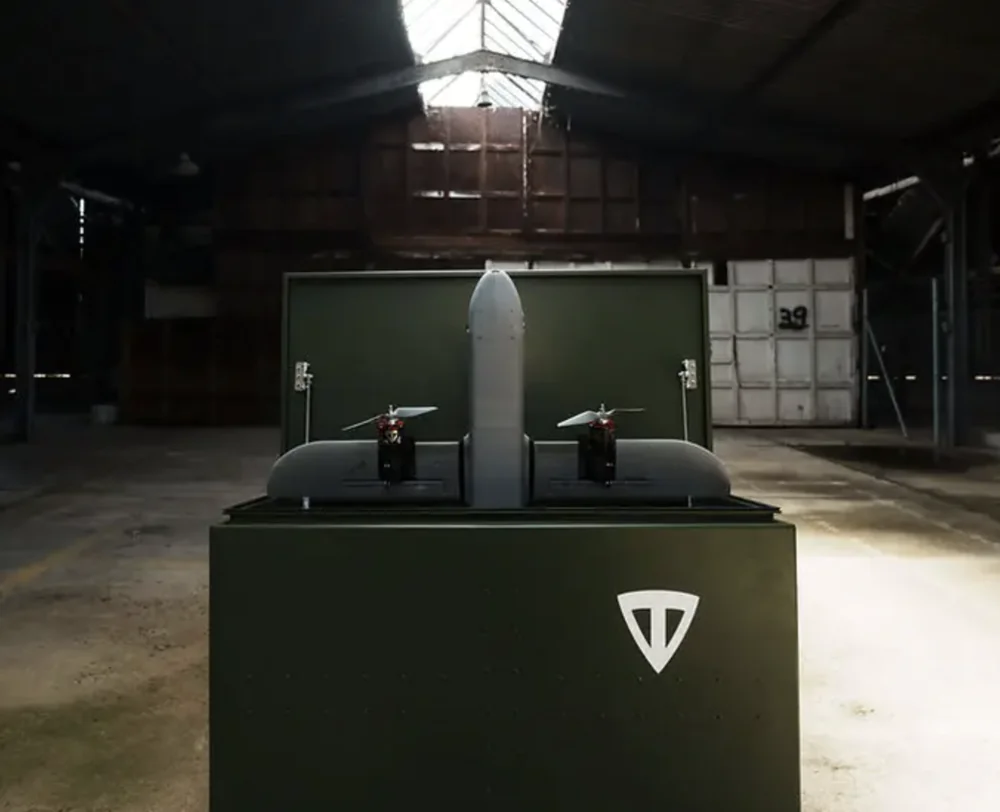
The German Tytan project fully aligns with this logic. To simplify the design of the UAV, its flight performance has been compromised. Its speed theoretically allows it to intercept various types of drones, including the Shahed-136. Even with a flight range of only 15-20 km, it doesn’t impose significant limitations, as it can intercept kamikaze drones after they have been launched.
Of course, organizing defense using such UAVs will be a challenging task. To compensate for the limited range, it may be necessary to increase the number of UAV systems involved. This will complicate the deployment and operation of specialized air defense, but it doesn’t guarantee success.
Currently, the Tytan UAV is equipped with only remote control, but in the future, an autonomous system with technical vision is promised. Both options could provide the necessary level of targeting accuracy. In its current configuration, the human factor is still involved, and the potential of the future system will depend on the successes of engineers and programmers.
Read also: Weapons of Ukrainian Victory: The 105mm 2-CT Hawkeye Self-Propelled Howitzer
Prospects for such developments
The market for interceptor UAVs is becoming increasingly competitive, with several alternative systems available. Notable competitors include RapidEagle, a French innovation equipped with a net to capture enemy drones without damaging them and minimizing the risk of debris, and MORFIUS, developed by Lockheed Martin, which uses high-frequency electromagnetic waves to neutralize drones at a distance. In comparison, the Tytan Technologies drone offers a fast and direct interception method, simplifying logistics and potentially reducing costs compared to more complex systems.
The use of interceptor UAVs is especially relevant in the context of the ongoing war in Ukraine. The Ukrainian Armed Forces are facing an increasing threat from enemy drones, which are used for reconnaissance and kamikaze missions. These devices pose a significant risk to critical infrastructure and military positions. Specialized units, such as the Ukrainian 414th Regiment, have already deployed innovative systems to counter these threats. Interceptor drones, like the Tytan Technologies system, provide an effective solution for protecting sensitive infrastructure and minimizing human and material losses.
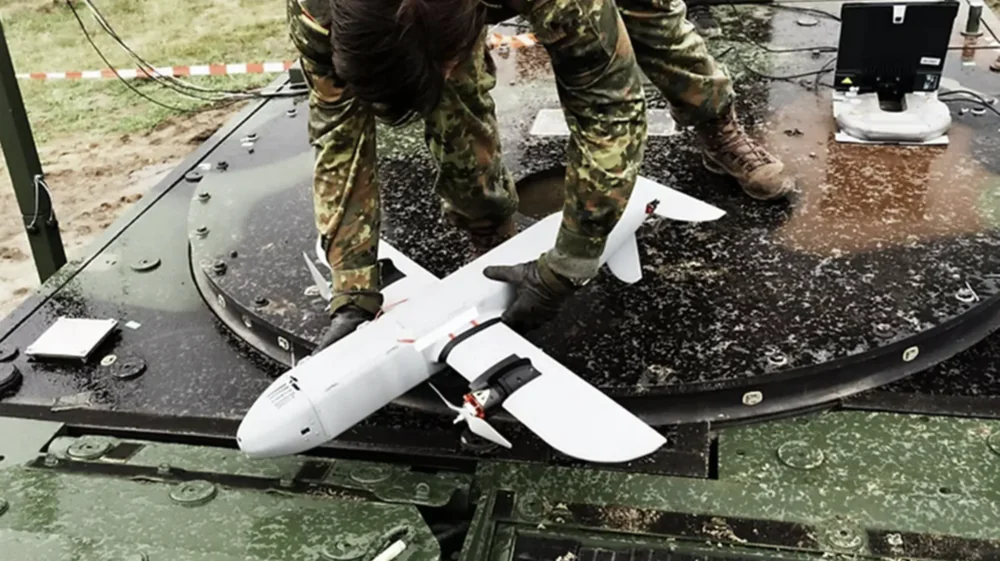
The successful testing of the Tytan Technologies interceptor drone marks an important step in modernizing Ukraine’s defense capabilities. This development is part of a broader international collaboration aimed at leveraging advanced technologies to address the new challenges of modern warfare. The next steps include operational feedback and accelerating production to enable the deployment of these UAVs on a larger scale. These efforts highlight Ukraine’s commitment to strengthening its technological capabilities on the battlefield.
It’s encouraging to see that our military is already using this advanced UAV. This proves that our Western partners trust Ukraine and are doing everything possible to help our Armed Forces defeat the enemy on the battlefield.
Cutting-edge German UAVs are already assisting Ukrainian troops in destroying the enemy at the front. We are truly grateful to our Western partners, particularly our friends from Germany, for their support and the supply of modern weaponry.
We stand with our defenders. The invaders have nowhere to escape from retribution. Death to the enemies! Glory to the Armed Forces of Ukraine! Glory to Ukraine!
And if you are interested in articles and news about aviation and space technology, we invite you to our new project AERONAUT.media.
Read also:
- Weapons of Ukrainian Victory: Sonobot 5 surface drones
- Weapons of Ukrainian Victory: JUMP 20 VTOL tactical reconnaissance UAV
